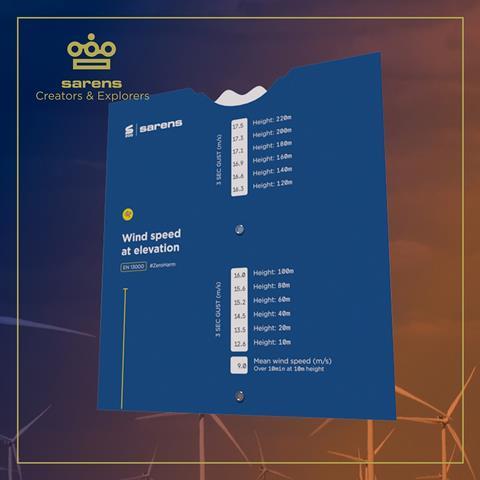Sarens has collaborated across various departments to create an in-house tool that can quickly calculate wind speeds at any given boom height, determining whether it is safe to proceed with lifting operations.

To operate safely in windy conditions, Sarens said that it has long depended on a number of forecasting tools, including mobile weather apps, internet forecasts, and contracted weather forecasting services. However, this only serves as a starting point as most systems forecast the weather based on computer modelling at a 10 m elevation; at Sarens it is not uncommon to be working at heights in excess of 100 m.
At these heights, wind speeds are far more intense and further calculations are required based on the EN 13000 formula, said Sarens.
Sarens’ tool – the Wind Speed at Elevation Tool, or the Sarens Wind Disc – therefore takes this into account. It consists of two components: a blue outer sleeve, listing boom heights from 10 to 220 m, and a white internal disc, listing wind speed in metres per second. The disc uses the EN 13000 formula to convert wind gust calculations provided by weather services into an accurate forecast based on actual boom tip height, with no room for error, said Sarens.
The company added that operators use the mean wind speed provided by weather forecasting services as a starting point, checking at least two different sources and using the faster of the two wind speeds for all subsequent calculations. They then input that wind speed into the Sarens Wind Disc tool, turning the internal white disc so the speed is listed in the lower window.
This provides the corresponding wind speeds for all possible boom tip heights. When the mean wind speed at ground level is 10 m per second, for example, the Wind Disc shows it as 19.4 m per second at a height of 220 m, Sarens explained.
The operator can then make an informed decision on how to proceed with lift operations.
















